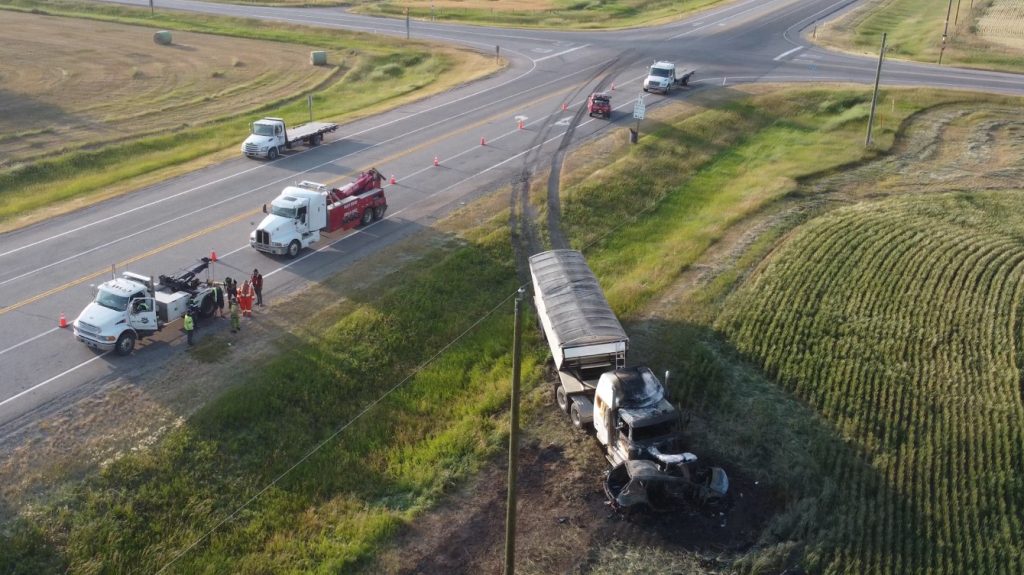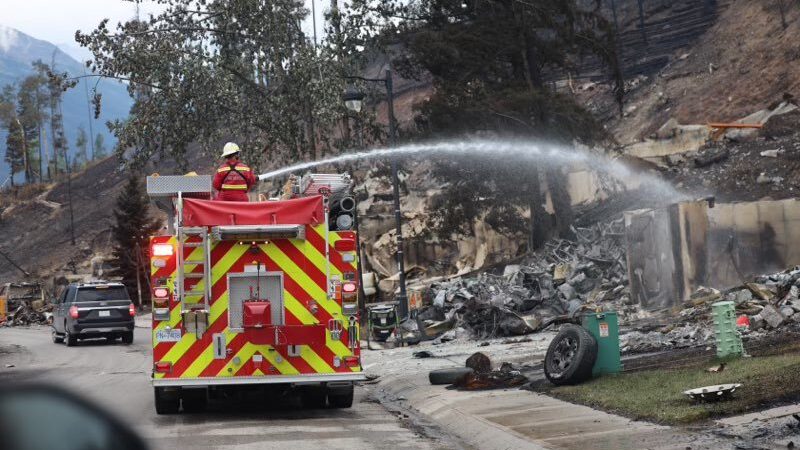‘It’s going off the charts’: Wastewater testing reflecting surge of COVID-19 cases
Posted Jan 7, 2022 4:23 pm.
Last Updated Jan 8, 2022 12:24 pm.
As we go through another wave of COVID-19 infections fuelled by the Omicron variant, one method of detecting the virus may be a bit more effective in showing the spread than PCR tests.
Over the last year, researchers from around Alberta and across the country with the Canadian Water Network have been turning their attention to wastewater, hoping to see a reflection of the growth in cases.
Right now, as we deal with more cases than ever before, it is confirming the situation clearly.
“It’s going off the charts,” said Steve Hrudey, professor emeritus at the University of Alberta. “The most dramatic spike previously was the Delta surge in August through October. Compared to that, Omicron is just blowing through the ceiling.”
Related article:
Experts identify rise of COVID-19 in Calgary wastewater
Researchers like Hrudey tout this method of detection as a faster way to spot clusters of the virus in communities, and we are seeing quite a significant increase around Calgary since the end of December. The numbers are also detected as a part of regular testing of wastewater to ensure safety in the community and are easily worked into the day-to-day operations of the facilities.
Other benefits of looking at wastewater include how COVID-19 can show up in sewage even if people have no symptoms from the virus. This is more important as it is much harder to get a PCR test currently due to changing rules on how to schedule one.
“It’s not subject to any policies. Clinical testing is subject to availability of tests, criteria for who gets tested, and that’s bounced all over the place in every jurisdiction,” Hrudey said. “Testing just can’t keep up. That in part explains the horrendously high positivity rates that are being reported.”
Unfortunately, it is impossible to get specific numbers on how many people have the virus through wastewater testing but it is crucial in showing the trends — including if cases do start to go down.
“What we see is that wastewater serves as a leading indicator to clinically-diagnosed cases that occur six days later. So wastewater predicts what is going to be happening,” said Michael Parkins, associate professor at the University of Calgary’s Cumming School of Medicine.
Parkins said they are also still using this data as a way to predict lab-confirmed cases and it has been fairly accurate up to this point.
It has led them to predict new daily cases ranging up to over 3,500 for the Calgary area alone, using the most recent wastewater data to forecast for where the levels will be come Jan. 10.
As has become clear with the changes to testing, the actual amount of virus in the community is far higher than the confirmed cases reported by Alberta Health during the week. For these reasons, Parkins said the wastewater data is much more effective as it is inclusive and comprehensive.
“Inclusive because it includes all members of society and no individuals are excluded, including marginalized populations, and it’s comprehensive in that it captures all individuals whether they get tested or not, whether they have symptoms or not. So it’s a really powerful tool,” he said.
READ MORE:
-
New tool helps track COVID-19 in Calgary’s wastewater
-
Calgary researchers looking at wastewater for early signs on COVID-19
When we look towards the future of the virus after we hopefully get a better handle on cases, Hrudey said this research will still have a role to play and could be crucial in finding new variants.
“You can, with these samples, send them off for a full genetic determination which will give you a warning that you’ve actually got something else you’ve never seen before. That seems like a prudent thing to invest in for sure.”
Omicron has really changed the game two years into the pandemic, and as it seems like we move away from traditional testing like in earlier waves, there is a hope this sort of research can fill the void.
“We have a higher percentage of people with milder disease because of an increasingly immune population where fewer and fewer symptoms are apparent to result in people if they get testing,” said Parkins. “As a result of that, as we move forward, the wastewater testing will prove to be the gold standard for looking at community burden of COVID.”
On that note, Hrudey said this is also extremely cost-effective as it looks at a wide range of potential samples to look at the spread of the virus and does not depend on people shelling out lots of money for rapid tests or PCR tests.
He said this highlights the important work of scientists throughout the pandemic and how different solutions can be found quickly with little cost to the community.
“To a large degree, this has been led by the researchers rather than being driven by public health or governments. So, I think we’re all beneficiaries of that.”








